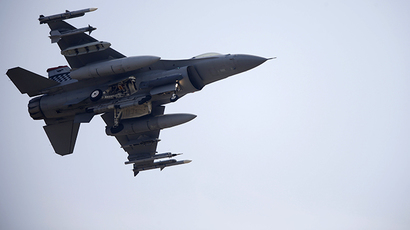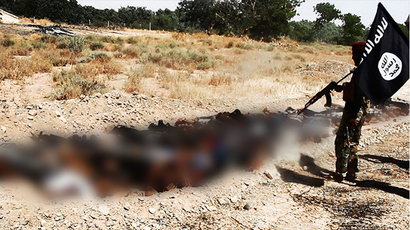Back to Iraq: F-18 Super Hornets patrol desert to track ISIS forces
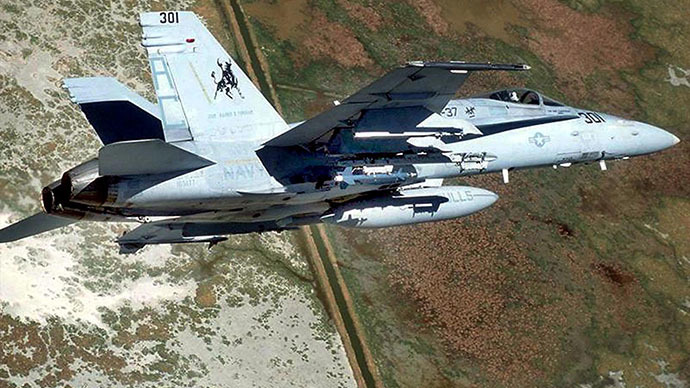
In less than three years US fighter jets have returned to Iraqi skies, as Obama’s administration has authorized “manned and unmanned” surveillance flights there to keep an eye on the ISIS jihadist group that threatens to overrun the whole of Iraq.
Follow RT's LIVE UPDATES on ISIS offensive in Iraq
ISIS, Inc. – Jihadists attract investors, fighters with annual reports & glossy PR
Another “desert storm” in Iraq could on its way as the US aerial surveillance mission could be the prelude to a full-fledged air-to-surface warfare operation against militants of the Islamic State in Iraq and the Levant (ISIS), Fox News reported.
The F-18s are taking off from the USS George H.W. Bush aircraft carrier, which arrived in the Persian Gulf last Sunday.
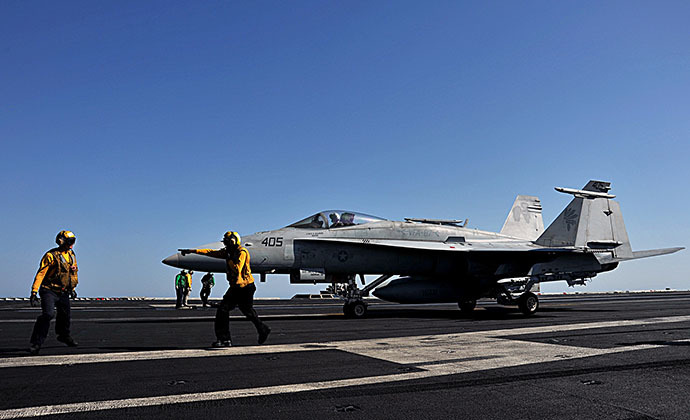
It was Iraqi Prime Minister Nouri al-Maliki who asked President Barack Obama for air strikes against ISIS, yet so far the Americans have agreed to perform airborne reconnaissance only. Some analysts are speculating that Washington has not decided yet whether it needs al-Maliki, or would prefer Iraq to change its ruler once again.
The present Iraqi government is heavily Shiite-dominated and the Obama administration has been pressing Iraqi Prime Minister Nouri al-Maliki to make changes to his government, bringing in more Sunnis into government posts. Last week, Obama acknowledged that any US military actions in Iraq would bring poor results unless there are also political changes in the government in Baghdad.
US officials, cited by Reuters, maintain that Iraq has asked for all kinds of air support and surveillance, including fighter jet and drone strikes, to deal with the ISIS jihadists.
The Obama administration has not made up its mind on whether to get involved in a new intervention in Iraq. The previous American occupation in Iraq ended in late 2011, after the withdrawal of as many as 143,000 American service personnel at its peak.
Yet Obama has already briefed both Democratic and Republican senior lawmakers, as well as Congressional leaders, that in his opinion he does not need authorization from Congress to overwhelm the ISIS insurgency in Iraq and might as well act on his own, AP reports.
On Wednesday afternoon, Obama met with senior Congressional leaders from both major political parties. Following the meeting, the White House issued a statement, emphasizing the US president’s position that Iraq’s leaders should “set aside sectarian agendas and to come together with a sense of national unity” if they want to put an end to the Shia-on-Sunni armed conflict.
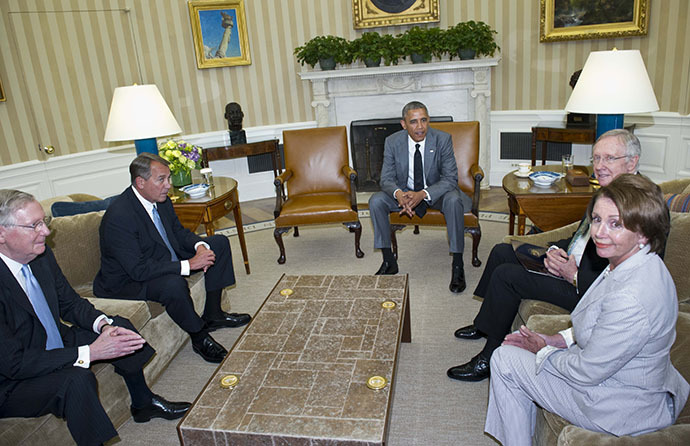
Senate Republican Leader Mitch McConnell told journalists after the meeting that Obama had “indicated he didn't feel he had any need for authority from us for steps that he might take.”
An aide to McConnell acknowledged to Fox News that ISIS poses a “grave threat to US interests,” particularly because Iraqi security forces “are now less capable than when the president withdrew the entirety of our force without successfully negotiating a remaining US presence," the aide said.
“It is critical that we protect Americans, our allies and our interests,” the aide said.
The statement also said that Obama is considering “options for increased security assistance” to Iraq.
Until recently, ISIS was known as Al-Qaeda’s spinoff in Iraq, but now that their armed groups stand only a few dozen kilometers from the capital city, Baghdad, they cannot be ignored any longer.
ISIS has already captured a huge part of Iraq’s territory, including country’s second-largest city of Mosul, as well as Tikrit, the native town of former country’s leader Saddam Hussein, Tal Afar and other Iraqi cities, many of them really not far from Baghdad.
US military intelligence and the CIA are tracking the key figures of ISIS, using data gathered by drones, satellites and friendly intelligence services. The data is massing up into detailed dossiers on insurgent commanders.
According to AP, such personal files on militants are also dubbed “targeting packages,” because usually they are used to establish their day-to-day location and movements information to target them using drones or military operations, or for non-lethal purposes.

Apart from the USS George H.W. Bush aircraft carrier, which arrived in the Persian Gulf earlier this week, Obama announced this week that 275 US troops will be deployed to Iraq to provide additional security for the US Embassy in Baghdad.
Also this week, the USS Mesa Verde, with 550 Marines onboard, has entered the Persian Gulf for a possible operation in Iraq.













